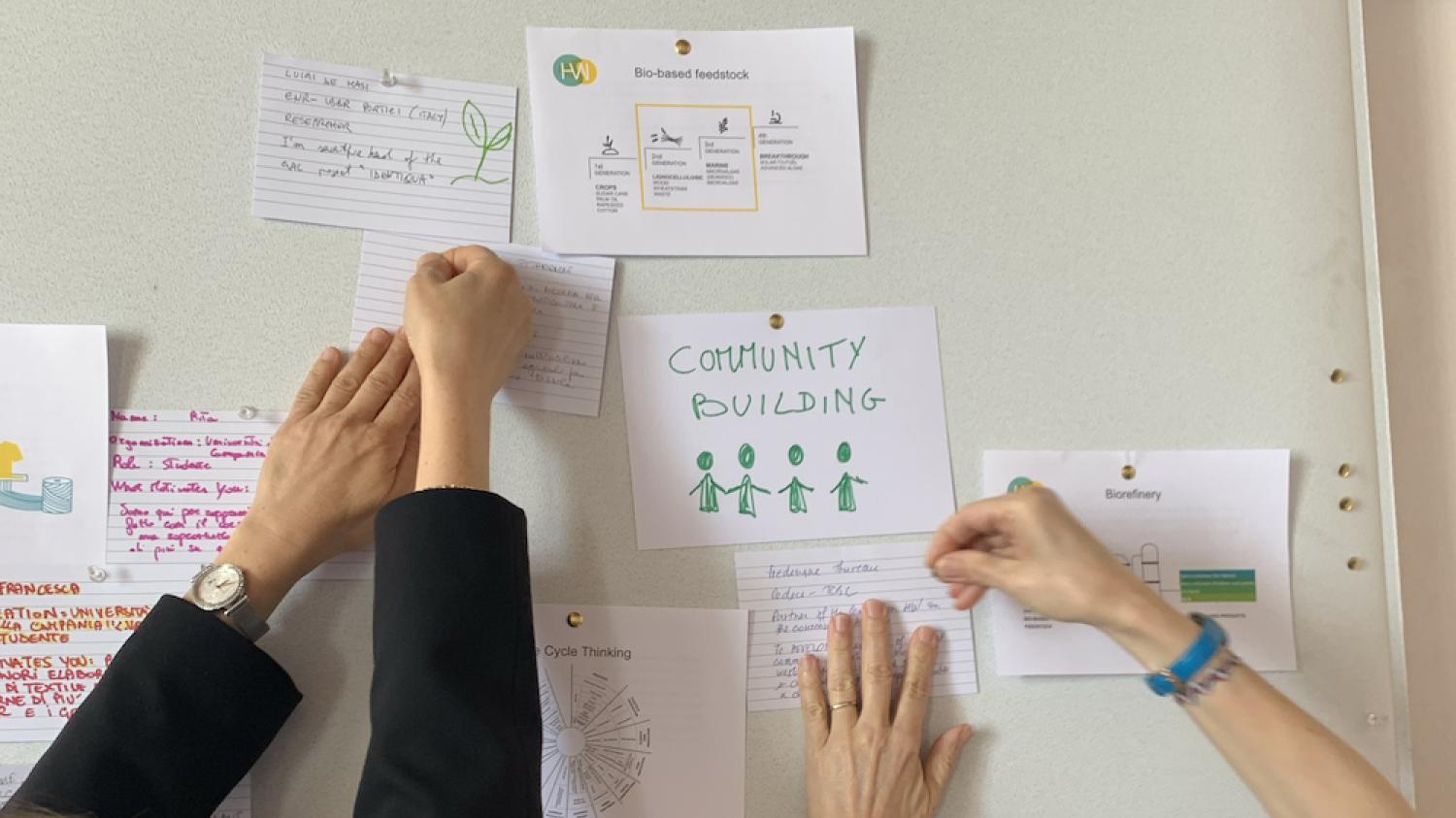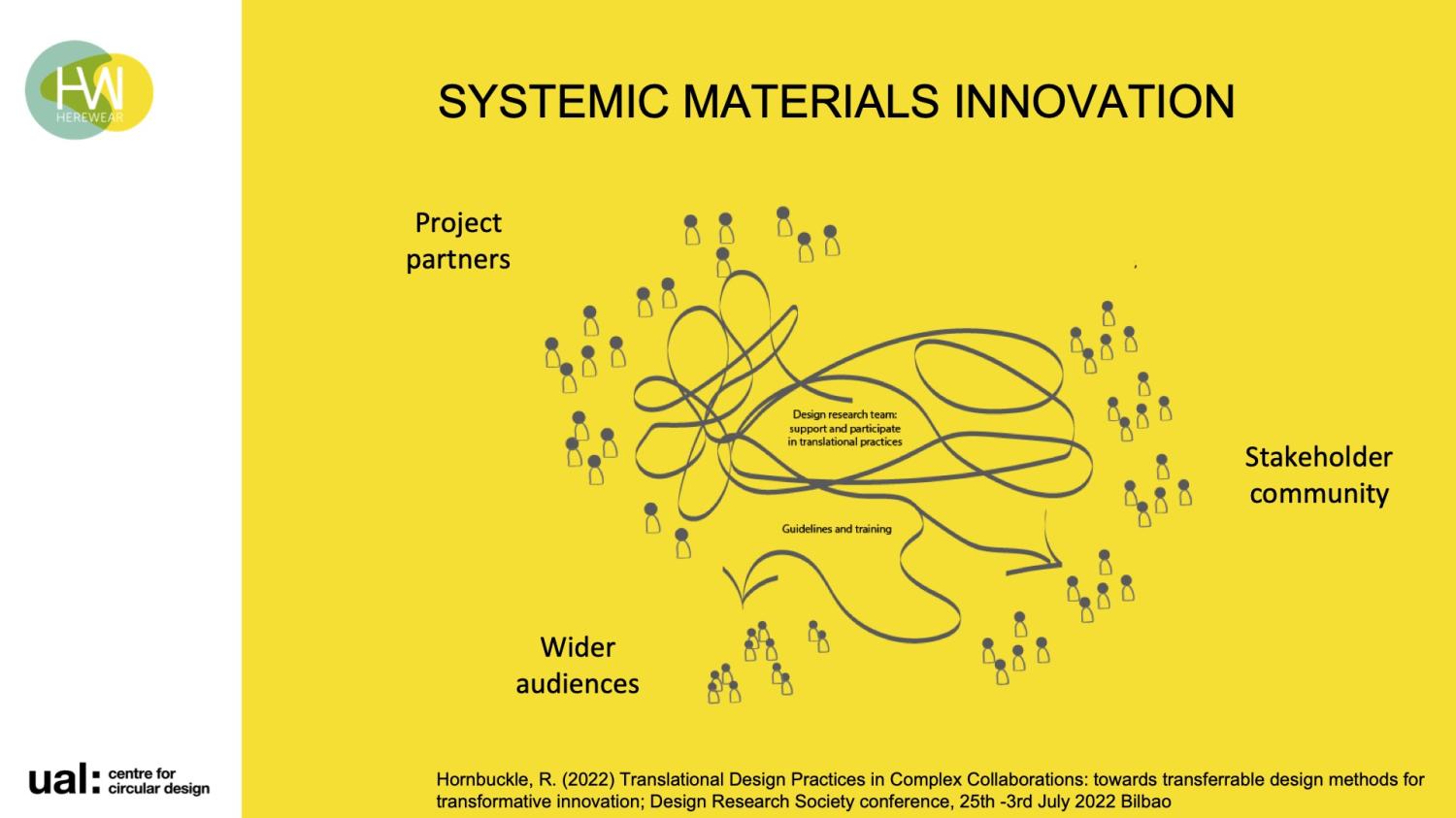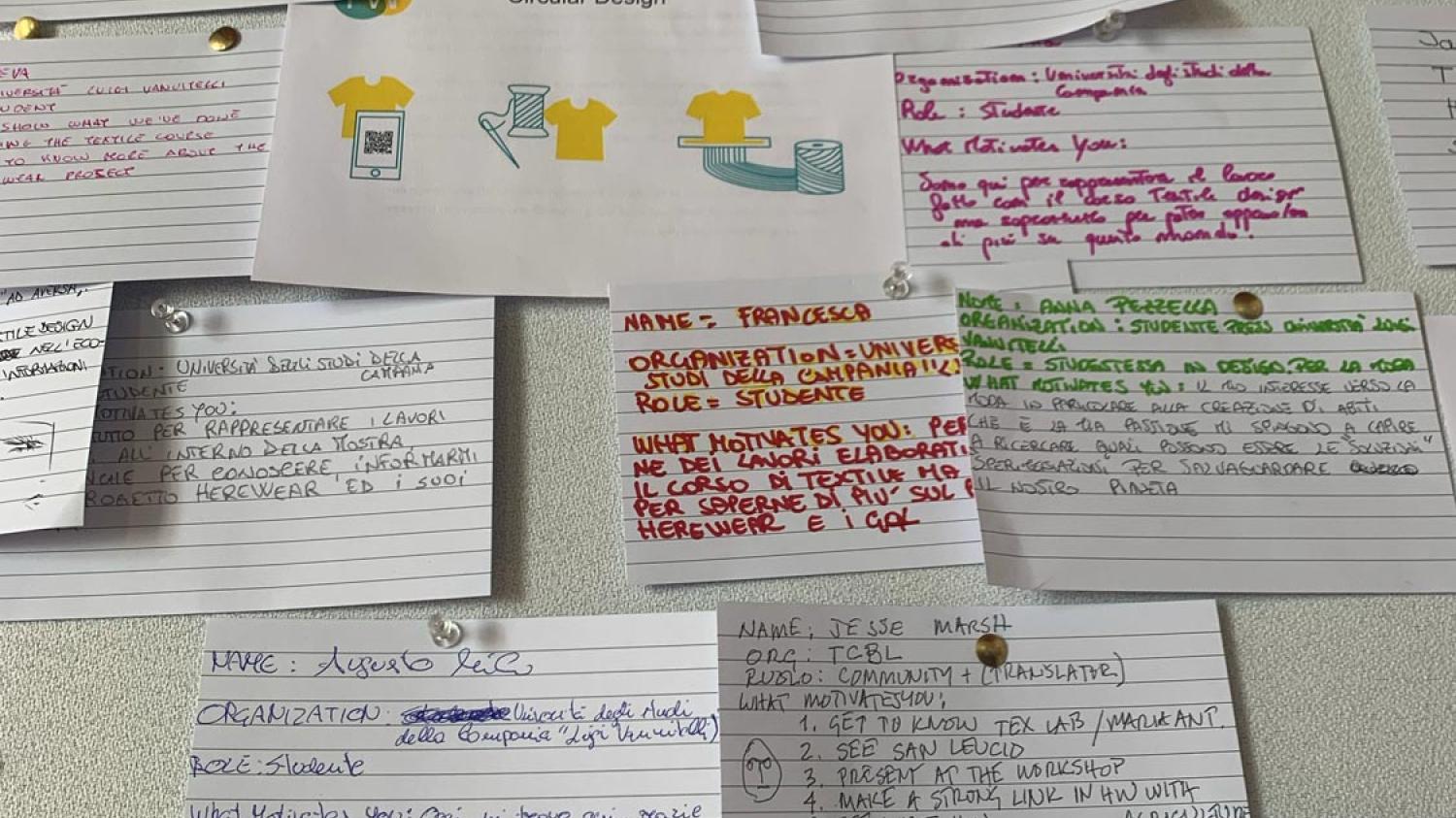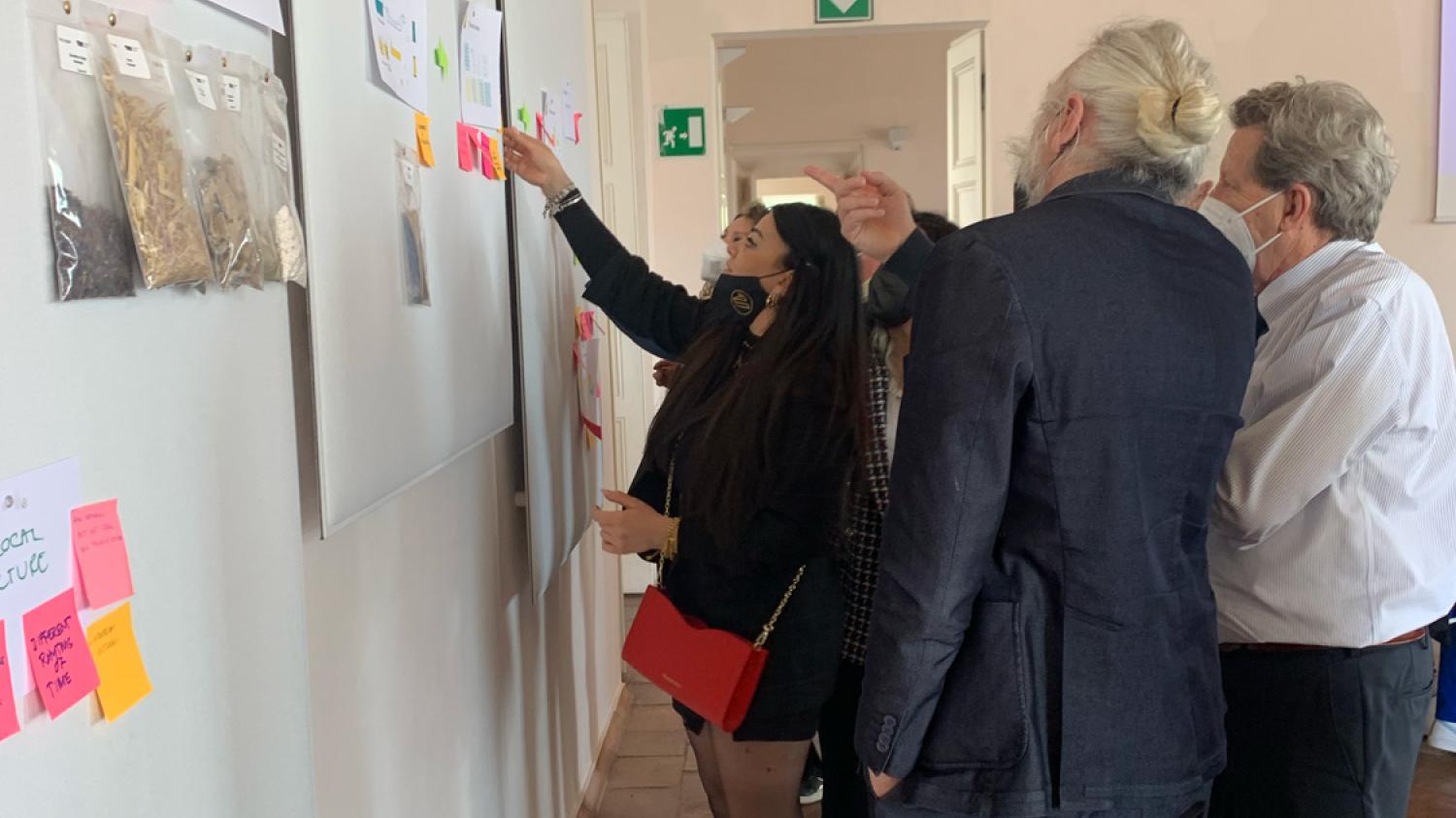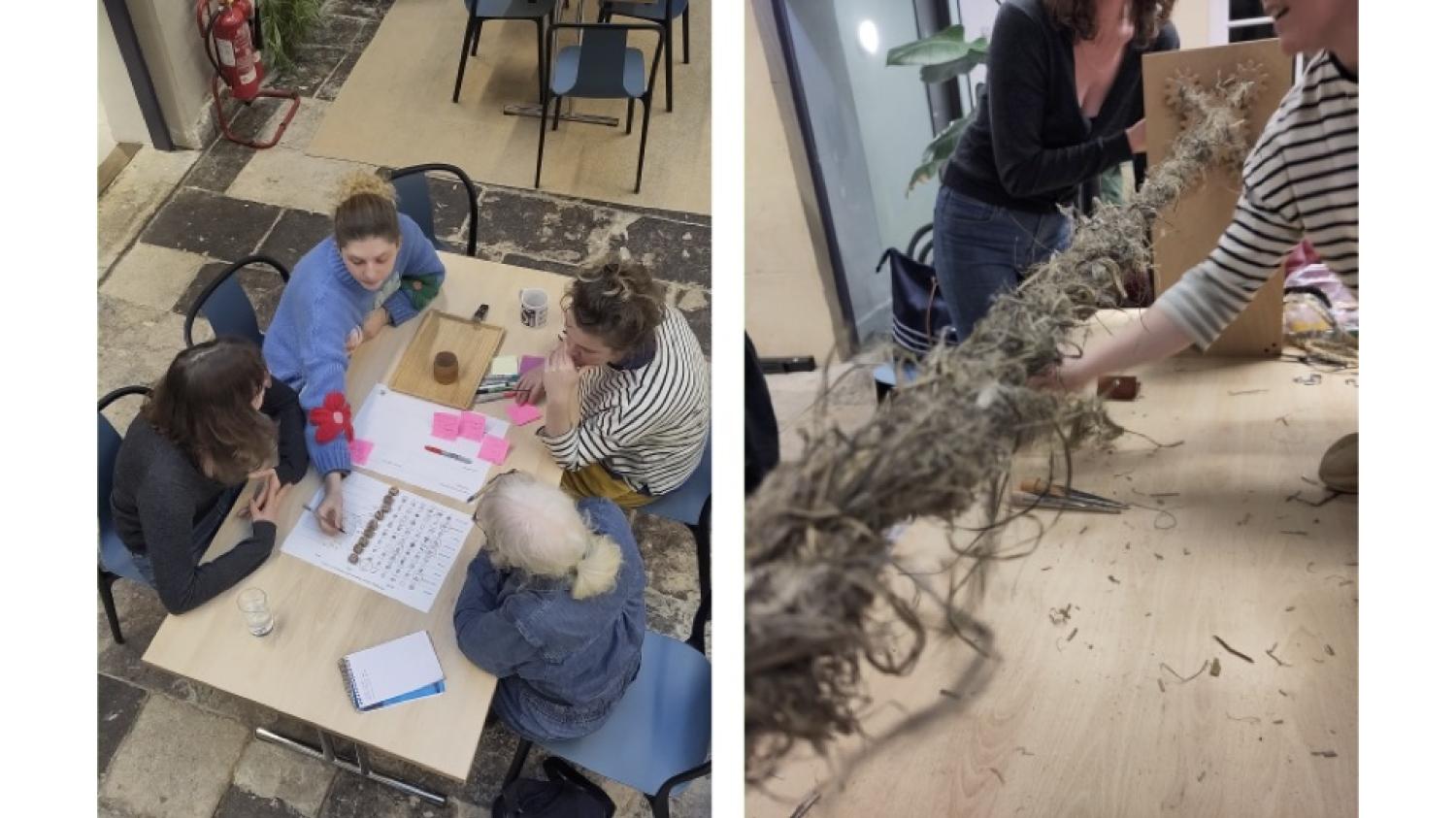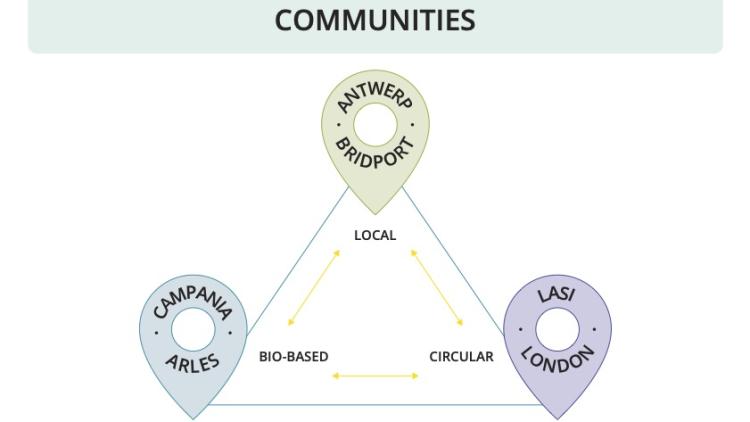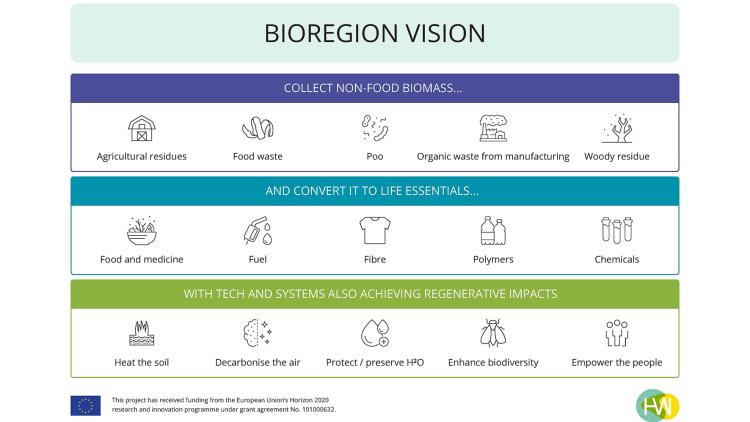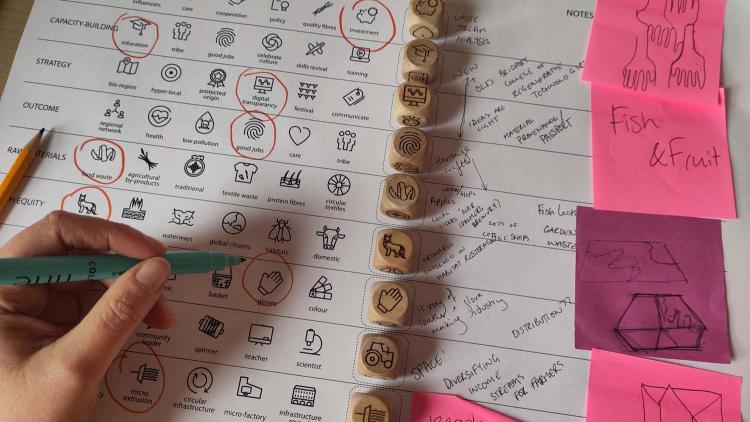Systemic Materials Innovation
Transition to a more sustainable textile ecosystem requires us to work across fields of knowledge and sectors rather than working in isolation, and material innovation must adopt a ‘systemic’ methodology to support the changes needed in industry.
Material innovation was once primarily the work of scientific institutes. As resource challenges, environmental damage and societal impacts have become more recognised and understood, the work of innovation has become more complex. To make the kinds of changes necessary for sustainable transition, we need to work across fields of knowledge and sectors rather than working in isolation. The type of material innovation needed now and for the future is ‘systemic’.
In this section you can find out about what Systemic Materials Innovation means in practice and the approach we took in the HEREWEAR project.
What is Systemic Materials Innovation?
A system is made up of different entities that are dynamically connected through different types of relationships. These relationships operate to achieve the goal of the system, for example in conventional textile production the goal could be defined as ‘producing and selling textile products (to make money)’, and the entities might include weavers, fibre spinners, garment manufacturers, designers and customers who connect to make textiles and garments that people want to buy.
Why do we need Systemic Materials Innovation?
In systemic innovation, the aim is to change the system to meet a new goal, for example a goal that is more aligned to the needs of people and planet. When materials are involved, the systemic change is often to do with physical resource use and processing, but also inevitably must consider the social and environmental dimensions.
Changing a system is challenging and can be disruptive for everyone involved, so gradual transition is a safer and more realistic aim for systemic innovation.
How did we practice Systemic Materials Innovation in HEREWEAR?
There are different methodologies for systemic innovation depending on the context and the aim of intervention. In HEREWEAR we adapted a systemic design research methodology with some approaches borrowed from service design and circular design.
To begin with, systemic innovation requires that those entities most affected by the change (stakeholders) can be engaged in, or even involved in, the innovation process wherever possible and appropriate.
The HEREWEAR project had the ambitious aim of changing the goal of the textile ecosystem to ‘producing and selling circular bio-based and local textiles’. To change the goal of a system (or even a small part of it) means that the entities may need to change their relationships, and how they operate, to meet this new goal.
In HEREWEAR the consortium was assembled to represent as much of the textiles ecosystem as feasible, and also included an existing stakeholder network called TCBL. Design researchers then developed a methodology to connect the partner system within the HEREWEAR project with the stakeholder system outside the project, following these five steps:
- Describe the intervention: we asked partners to describe their intentions and expectations about how their work in HEREWEAR might help stakeholders transition to Circular, Bio-based and Local textile ecosystem.
- Stakeholder Engagement: we designed tools and activities to engage a range of people through a series of workshops and events, including farming representatives, fibre spinners, biorefinery developers, manufacturers and garment designers, to test the HEREWEAR partner ideas about how to create a circular, bio-based, and local textile ecosystem.
- Open Innovation: We used these insights to guide material innovation in a (relatively) open process.
- Responsive Guidance: We developed a Guideline Canvas tool to help HEREWEAR partners identify and respond to stakeholder questions, concerns and to highlight the potential benefits of their technologies, tools and models.
- Translation into Systemic Knowledge HUB: We created the HEREWEAR HUB to translate and connect the wide range of guidance generated during the project and create a system of accessible knowledge for people who want to create circular, bio-based and local textiles and clothing.
You can download and use the Guideline Canvas tool using the Download full documentation button at the top of the page.
What to do next
Suggested reading & viewing
Academic papers:
- Hornbuckle, Rosie (2023) Co-designing knowledge flow for systemic innovation in textiles: Bio-based, Local, Circular. In: 4th Symposium on Circular Economy and Sustainability, 19-21 June 2023, Heraklion, Greece.https://ualresearchonline.arts.ac.uk/id/eprint/20550/1/Codesigning%20systemic%20textiles.pdf
- Hornbuckle, R. (2022) Project proximities: A meta review of how design addresses distance in complex collaborations, in Lockton, D., Lenzi, S., Hekkert, P., Oak, A., Sádaba, J., Lloyd, P. (eds.), DRS2022: Bilbao, 25 June - 3 July, Bilbao, Spain. https://doi.org/10.21606/drs.2022.677https://ualresearchonline.arts.ac.uk/id/eprint/20550/2/HORNBUCKLE%20systemic%20knowledge%20flow.pdf

